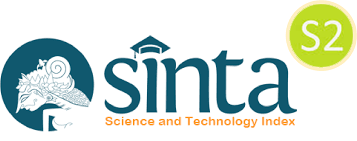Deepfake and Electoral Crimes: Criminal Law Perspectives from Indonesia, India, Pakistan, and the U.S.
DOI:
https://doi.org/10.18196/iclr.v7i2.26337Keywords:
Artificial Intelligence, Deepfake, Election Crime, Indonesia, Political CampaignAbstract
Deepfake technology, an advanced AI-driven tool capable of creating hyper-realistic synthetic media, provides significant challenges in political campaigns and election integrity. As the use of deepfakes in elections rises, concerns about their potential to spread misinformation and manipulate voter perception become increasingly urgent. This study examines the criminal law approaches to deepfakes in political campaigns across Indonesia, India, Pakistan, and the United States. Using a normative legal research method, this paper analyzes relevant laws, regulations, and legal frameworks governing deepfake misuse in elections. A comparative approach is employed to assess legal responses in different jurisdictions, identifying gaps and challenges in addressing the issue effectively. Findings reveal that while Indonesia relies on broader legal provisions, such as the ITE Law and Personal Data Protection Law, there are no specific regulations targeting deepfake manipulation in elections. Similarly, India and Pakistan address deepfake-related offenses through existing cyber and penal laws, whereas the U.S. has taken a more proactive approach with state-level legislation criminalizing deepfake election interference. This research highlights the need for more comprehensive legal frameworks to mitigate the risks of deepfakes in electoral processes and ensure democratic integrity.
References
Afifa, Laila, ‘Kominfo Ministry Asserts Jokowi’s Speech in Chinese Produced by Deepfake’, Tempo, 2023 <https://en.tempo.co/read/1789306/kominfo-ministry-asserts-jokowis-speech-in-chinese-produced-by-deepfake>
Algamar, Muhammad Deckri, and Aliya Ilysia Irfana Ampri, ‘Hak Untuk Dilupakan: Penghapusan Jejak Digital Sebagai Perlindungan Selebriti Anak Dari Bahaya Deepfake’, Jurnal Yustika: Media Hukum Dan Keadilan, 25.01 (2022), pp. 25–39, <https://doi.org/10.24123/yustika.v25i01.5091>.
Almutairi, Zaynab, and Hebah Elgibreen, ‘A Review of Modern Audio Deepfake Detection Methods: Challenges and Future Directions’, Algorithms, 15.5 (2022), p. 155, <https://doi.org/10.3390/a15050155>.
Ardianto, Robi, ‘Bawaslu Temukan 341 Dugaan Pelanggaran Konten Internet, Paling Banyak Soal Ujaran Kebencian’, Badan Pengawas Pemilu, 2024 <https://bawaslu.go.id/id/berita/bawaslu-temukan-341-dugaan-pelanggaran-konten-internet-paling-banyak-soal-ujaran-kebencian>
Arora, Tanvi, and Rituraj Soni, ‘A Review of Techniques to Detect the GAN-Generated Fake Images’, in Generative Adversarial Networks for Image-to-Image Translation (Elsevier, 2021), pp. 125–59, <https://doi.org/10.1016/B978-0-12-823519-5.00004-X>
Birrer, Alena, and Natascha Just, ‘What We Know and Don’t Know about Deepfakes: An Investigation into the State of the Research and Regulatory Landscape’, New Media & Society, 2024, <https://doi.org/10.1177/14614448241253138>.
Bodi, Matthew, ‘The First Amendment Implications of Regulating Political Deepfakes’, Rutgers Computer & Technology Law Journal, 47.1 (2021), p. 143
Carver, Steven, ‘Election Integrity and the First Amendment: A Statutory Analysis of States’ Regulations of Election Deepfakes’, Mitchell Hamline Law Review, 50.3 (2024), p. 596
Chaudhry, Asif, ‘Punjab Police File Three Cases under Peca for Deepfake Content’, Dawn, 2025 <https://www.dawn.com/news/1893349> [accessed 22 March 2025]
Chen, Heather, ‘AI “Resurrects” Long Dead Dictator in Murky New Era of Deepfake Electioneering’, CNN, 2024 <https://www.cnn.com/2024/02/12/asia/suharto-deepfake-ai-scam-indonesia-election-hnk-intl/index.html>
Cindy, Mutia Annur, ‘Ini Media Sosial Paling Banyak Digunakan Di Indonesia Awal 2024’, Databoks, 2024 <https://databoks.katadata.co.id/datapublish/2024/03/01/ini-media-sosial-paling-banyak-digunakan-di-indonesia-awal-2024>
Datta, Abhinaba, and Subarno Banerjee, ‘Unmasking Deepfakes-A Legal Perspective’, Jus Corpus Law Journal, 4.4 (2023), pp. 336–58
Devina, Cindy Bella, Dissa Chandra Iswari, Go Christian Bryan Goni, and Devi Kimberly Lirungan, ‘Tinjauan Hukum Kriminalisasi Berita Hoax: Menjaga Persatuan vs. Kebebasan Berpendapat’, Kosmik Hukum, 21.1 (2021), p. 44, <https://doi.org/10.30595/kosmikhukum.v21i1.8874>.
Diakopoulos, Nicholas, and Deborah Johnson, ‘Anticipating and Addressing the Ethical Implications of Deepfakes in the Context of Elections’, New Media & Society, 23.7 (2021), pp. 2072–98, <https://doi.org/10.1177/1461444820925811>.
Enoch, Wesley, ‘Vox Populi, Vox Dei (The Voice of the People Is the Voice of God)’, Voice and Speech Review, 12.1 (2018), pp. 77–85, <https://doi.org/10.1080/23268263.2017.1398919>
Fadhilah, Almira Daisy Zahrah, and Sri Retnoningsih, ‘Perancangan Kampanye Digital Melawan Disinformasi Melalui Artificial Intelligence Dan Deepfake Di Kalangan Pra Lansia Usia 45-55 Tahun’, Prosiding FAD, 3.2 (2024), pp. 1–17 <https://eproceeding.itenas.ac.id/index.php/fad/article/view/2943>
Farid, Hany, and Hans-Jakob Schindler, Deep Fakes (Konrad-Adenauer-Stiftung, 2020)
Gandrova, Shannon, and Ricky Banke, ‘Penerapan Hukum Positif Indonesia Terhadap Kasus Kejahatan Dunia Maya Deepfake’, Madani: Jurnal Ilmiah Multidisiplin, 1.10 (2023), pp. 650–57
Gaulkin, Thomas, ‘The Campaign Volunteer Who Used AI to Help Swing Pakistan’s Elections: Interview with Jibran Ilyas’, Bulletin of the Atomic Scientists, 80.5 (2024), pp. 275–80, <https://doi.org/10.1080/00963402.2024.2388458>
Goodfellow, Ian, Jean Pouget-Abadie, Mehdi Mirza, Bing Xu, David Warde-Farley, Sherjil Ozair, and others, ‘Generative Adversarial Nets’, Advances in Neural Information Processing Systems, 27 (2014), pp. 1–9
———, ‘Generative Adversarial Networks’, Communications of the ACM, 63.11 (2020), pp. 139–44
Halder, Debarati, ‘A Retrospective Analysis of S. 66a: Could S. 66a of the Information Technology Act Be Reconsidered for Regulating’Bad Talk’in the Internet?’, Indian Student Law Review (ISLR), 3 (2015), pp. 91–118
International Institute for Democracy and Electoral Assistance, Electoral Justice (International IDEA, 2010)
Kaur, Achhardeep, Azadeh Noori Hoshyar, Vidya Saikrishna, Selena Firmin, and Feng Xia, ‘Deepfake Video Detection: Challenges and Opportunities’, Artificial Intelligence Review, 57.6 (2024), pp. 1–47, <https://doi.org/10.1007/s10462-024-10810-6>.
Kietzmann, Jan, Adam J Mills, and Kirk Plangger, ‘Deepfakes: Perspectives on the Future “Reality” of Advertising and Branding’, International Journal of Advertising, 40.3 (2021), pp. 473–85, <https://doi.org/10.1080/02650487.2020.1834211>.
Kolagati, Santosh, Thenuga Priyadharshini, and V. Mary Anita Rajam, ‘Exposing Deepfakes Using a Deep Multilayer Perceptron – Convolutional Neural Network Model’, International Journal of Information Management Data Insights, 2.1 (2022), p. 100054, <https://doi.org/10.1016/j.jjimei.2021.100054>
Meckel, Miriam, and Léa Steinacker, ‘Hybrid Reality: The Rise of Deepfakes and Diverging Truths’, Morals & Machines, 1.1 (2021), pp. 10–21
Muhammad Awais Aslam, Abdullah Kanrani, and Muhammad Adil Shehroz, ‘Regulating Misinformation or Silencing Dissent? A Constitutional Analysis of the PECA Amendments 2025’, The Critical Review of Social Sciences Studies, 3.1 (2025), pp. 1809–15, <https://doi.org/10.59075/t1c1hz64>.
Pawelec, Maria, ‘Deepfakes and Democracy (Theory): How Synthetic Audio-Visual Media for Disinformation and Hate Speech Threaten Core Democratic Functions’, Digital Society, 1.2 (2022), p. 19, <https://doi.org/10.1007/s44206-022-00010-6>.
Perdana, Aditya, and Delia Wildianti, ‘Narasi Kampanye Dan Media Sosial Dalam Pemilu Presiden Dan Wakil Presiden Tahun 2019’, Jurnal Bawaslu DKI, 2018, pp. 21–39
Rajeev, Sankar, ‘Thematic Analysis on the Indian Representation of People’s Act, 1951’, International Journal of Human Rights and Constitutional Studies, 7.3 (2020), pp. 209–32
Santiko, Jetrin Arfan, and Syaiful Bahri, ‘Analisis Wacana Pada Fenomena Pengunaan Artificial Intelligence (AI) Dalam Konten Pemilu: Studi Kasus Konten Deepfake Soeharto Mengajak Untuk Memilih Partai Golkar Pada Media Sosial Twitter (X)’, Innovative: Journal Of Social Science Research, 4.3 (2024), pp. 13215–31
Siregar, Runi Hilda Fadlani, and Muhammad Vicky Afris Suryono, ‘Towards Transparent and Secure Elections: The Legal Landscape of Digital Electoral Systems in Indonesia’, E-Justice: Journal of Law and Technology, 1.2 (2025), pp. 15–30
Sumanjeet, ‘The State of E‐commerce Laws in India: A Review of Information Technology Act’, International Journal of Law and Management, 52.4 (2010), pp. 265–82, <https://doi.org/10.1108/17542431011059322>.
Wampler, Jack, ‘Deep Concern: Safeguarding Elections in the Age of Deepfakes’, Arizona Law Review, 66.3 (2024), p. 815
Westerlund, Mika, ‘The Emergence of Deepfake Technology: A Review’, Technology Innovation Management Review, 9.11 (2019), pp. 39–52
Wojewidka, John, ‘The Deepfake Threat to Face Biometrics’, Biometric Technology Today, 2020.2 (2020), pp. 5–7, <https://doi.org/10.1016/S0969-4765(20)30023-0>.
Wuragil, Sarno, and Widayati Widayati, ‘Development of Democracy & Phenomenon of Single Candidate in Regional Election (Pilkada)’, Law Development Journal, 3.1 (2021), pp. 120–29, <https://doi.org/10.30659/ldj.3.1.120-129>.
Yarnis, Yarnis, and Nani Nurani Muksin, ‘Semiotics Analysis of’Gemoy’Animations Political Communication Strategy in Efforts to Change Prabowo-Gibran’s Branding’, Lentera: Jurnal Ilmu Dakwah Dan Komunikasi, 2024, pp. 1–23, <https://doi.org/10.21093/lentera.v8i1.8069>>.
Downloads
Published
Issue
Section
License
Copyright (c) 2025 Rofi Aulia Rahman, Rizaldy Anggriawan

This work is licensed under a Creative Commons Attribution 4.0 International License.
By publishing with Indonesian Comparative Law Review, authors agree to the following terms:
1. Authors retain the copyright to their work and grant Indonesian Comparative Law Review the right of first publication, while also licensing the work under a Creative Commons Attribution License (CC BY 4.0). This license permits others to share the work, provided they acknowledge the author and the initial publication in this journal.
2. Authors may enter into separate agreements for non-exclusive distribution of the published version of their work, such as posting it to an institutional repository or including it in a book, with acknowledgement of its initial publication in this journal.
3. Authors are encouraged to share their work online, for example on institutional repositories or personal websites, both before and during the submission process. This practice can lead to productive exchanges and increased citation of published work.



